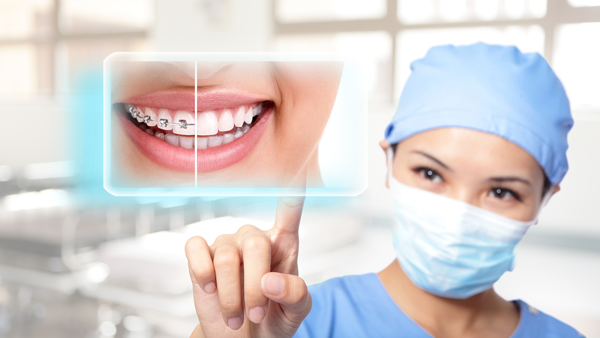The Only Guide to All Star Family Orthodontics
The Only Guide to All Star Family Orthodontics
Blog Article
Not known Factual Statements About All Star Family Orthodontics
Table of ContentsThe Greatest Guide To All Star Family OrthodonticsAll Star Family Orthodontics Things To Know Before You Get ThisThe Buzz on All Star Family OrthodonticsThings about All Star Family OrthodonticsSome Ideas on All Star Family Orthodontics You Need To Know

In enhancement, we use flexible therapy routines, versatile payment options and an enjoyable, satisfying experience.
An orthodontist is a dentist educated to diagnose, stop, and treat teeth and jaw irregularities - (https://www.wattpad.com/user/alstrfmlyrth). They deal with existing problems and are trained to recognize issues that may develop in the future. Orthodontists collaborate with individuals of all ages, from children to adults. Individuals typically link an ideal smile with good health and wellness.
Malocclusion, or misaligned teeth, can result in dental issues, consisting of dental caries, gum illness, and difficult or agonizing eating. Not everybody is born with straight teeth. If you have a bad bite or huge spaces in between your teeth, you may wish to consult a dental professional concentrating on orthodontic treatment.
What Does All Star Family Orthodontics Do?
(Image Credit History: DigitalVision/Getty Images) Orthodontists make use of fixed and removable dental devices, like braces, retainers, and bands, to alter the placement of teeth in your mouth. Orthodontic therapy is for dental problems, including: Uneven teethBite troubles, like an overbite or an underbiteCrowded teeth or teeth that are also much apartJaw misalignmentThe goal of orthodontic therapy is to improve your bite.
A healthy bite ensures you can consume, chew, and speak properly. While you could think about orthodontists as generally for youngsters or young adults that require braces, they can remedy dental problems at any age. Orthodontists participate in university, oral college, and orthodontic school. After college graduation, they spend 2 or 3 years in an orthodontic residency program.
All orthodontists are dental professionals, but not all dental experts are orthodontists. Orthodontic residency programs supply extensive, focused direction for dental experts. They concentrate on two locations: Exactly how to properly and safely move teeth Just how to correctly guide development in the teeth, jaw, and faceOnce an orthodontist has actually finished training, they have the option to become board certified - (https://www.sooperarticles.com/authors/786895/lawrence-paynes.html).
The All Star Family Orthodontics Statements
Imbalance, or malocclusion, is one of the most common reason individuals see an orthodontist. It is hereditary and is the outcome of size differences between the upper and lower jaw or between the jaw and teeth. Malocclusion results in tooth overcrowding, a misshapen jaw, or irregular bite patterns. Malocclusion is normally treated with: Your orthodontist attaches steel, ceramic, or plastic square bonds to your teeth.
If you have just small malocclusion, you might his comment is here have the ability to utilize clear dental braces, called aligners, rather than traditional dental braces. Some individuals need a headgear to assist move teeth right into line with pressure from outside the mouth. After braces or aligners, you'll need to use a retainer. A retainer is a custom gadget that keeps your teeth in position.

You may need to see an orthodontist if you have: Crowding or not enough area for all of your teethOverbite, when your top teeth come your bottom teethUnderbite, when your base teeth are as well far forwardSpacing or concerns with gapsCrossbite, which is when your upper teeth fit behind your bottom teeth when your mouth is closedOpen bite or a vertical space between your front base and upper teethMisplaced midline, when the center of your bottom and upper teeth do not align Remedying an oral malocclusion can: Make biting, chewing, and speaking easierImprove the balance of our face and your general appearanceEase discomfort from temporomandibular joint conditionsSeparate your teeth and make them less complicated to cleanse, assisting prevent dental caries or tooth cavities It's typically a dental professional who initially notices misaligned teeth during a routine examination.
Examine This Report about All Star Family Orthodontics
Throughout your very first orthodontic appointment, you'll likely have: A dental examPhotos taken of your face and smileDental X-raysPanoramic (360 level) X-rays of your face and headImpressions to develop mold and mildews of your teethThese examinations will help your orthodontist know exactly how to wage your therapy. An orthodontist is a dental practitioner that's had training to treat your teeth and jaw.
Orthodontists are dental professionals but not all dentists are orthodontists. Orthodontists are focused on your bite, or the method your teeth fit with each other, and the straightness of your teeth.

By thoroughly reviewing these elements, the orthodontist can determine any imbalances, crowding, spacing issues, or jaw inconsistencies. When a clear picture is established, the orthodontist will review customized therapy choices.
All Star Family Orthodontics Can Be Fun For Anyone
While dental braces are the most typically acknowledged orthodontic treatment, orthodontists have a diverse toolkit at their disposal. The certain method chosen depends upon the extent of the instance, the individual's age, and individual preferences. These reliable dental braces use a system of braces bound to the teeth and attached by wires.
Clear aligners, like Invisalign, are a popular alternative for patients seeking a more discreet therapy choice. These removable trays are tailor-made to progressively change the teeth's placement. Headwear might be used combined with braces or aligners to apply added targeted forces, especially for fixing jaw inconsistencies. In instances of narrow jaws, palatal expanders can be used to develop area for correct tooth positioning.
Report this page